Codex: Imperial Agents is here, and while we’re a bit divided over what its impact is likely to be from a more competitive perspective, one thing everyone here at Goonhammer agrees on is that Agents include some of the coolest units and themes in the game from a narrative perspective.
And while we’re excited to see how these rules stack up against the offerings in other codexes this edition, the nature of the Agents book has us wondering: will this book be worth using if you’re just looking to splash a few units into another Crusade Force? If you’re interested in using Codex: Imperial Agents in Crusade, whether as the core of a standalone force or as a “bolted on” addition to an existing army, we’re here with the answers to all your burning questions.
Before we dive in we’d like to thank Games Workshop for providing us with a preview copy of the codex.
Shadow Operations
So picture this, you’re a newly minted Inquisitor being sent to a investigate a sub-sector that is seemingly on the verge of collapse and your goal is to perform a series of clandestine Shadow Operations to seek out and uncover these threats and then crush them via the use of Intrigue and Influence to prevent the total collapse of the Imperium control in this sub-sector.
To aid you in this series of Shadow Operations, you have decided to of course request to be aided by Rogue Traders, the Deathwatch, Grey Knights, Sisters of Battle, the Space Cops, Space Sailors, and your collection of Inquisitive weirdos… Perhaps your cover story is the circus is in town or you’re a travelling theatre troupe? Either way, have fun explaining your cool army trying to sneak around and not draw too much attention.
Condit: Or, more likely for many players, maybe you’ve attached yourself to a crusading force of Sisters of Battle, or have found yourself working along side a strike force of Space Marines to root out the enemies of the Imperium. Or maybe you’re a Rogue Trader carting around a battalion of the Astra Militarum’s finest while trying to turn a profit on the edges of the Imperium? If so, you can still embark on Shadow Operations, as the only requirement to gain access to these rules is that you have at least one AGENTS OF THE IMPERIUM CHARACTER on your roster.

Each Shadow Operation revolves around you generating three threats, which you’ll randomly generate from a table. The threats you’ll be trying to thwart can be Minoris, Majoris or Extremis level. Minoris level threats are common, quick to uncover, and relatively straightforward to thwart. The downside is that, due to their simplicity, the clock is ticking and you only have so much time to work with, as threats draw closer to completion after each game you play. Extremis threats are the complete reverse by being rare, harder to uncover, and require you to commit more of your Intrigue and Influence to stopping them. That said, you have more time to get it sorted. Majoris sit comfortably between the two.
The higher the threat level, the more threat score they are worth towards your control of the sub-sector, but if you don’t uncover and thwart a threat before time runs out, you will instead lose that threat score. And don’t think you’re safe if you’re at 0 control: it can go negative.
Each time you play a Crusade game, you’ll generate 1 Investigation point to assign to any of threat that you haven’t uncovered yet. If you need more, you can gain them through other means, like agendas. Once you’ve decided which threats to investigate, you’ll pick a single threat with at least one Investigation point assigned to it and attempt to uncover it and discover what sort of plot you’re trying to foil. To do so, roll a D6 and add the Investigation points assigned to the threat to the result. Equal or beat the threat’s Covert level and you will have Uncovered it.
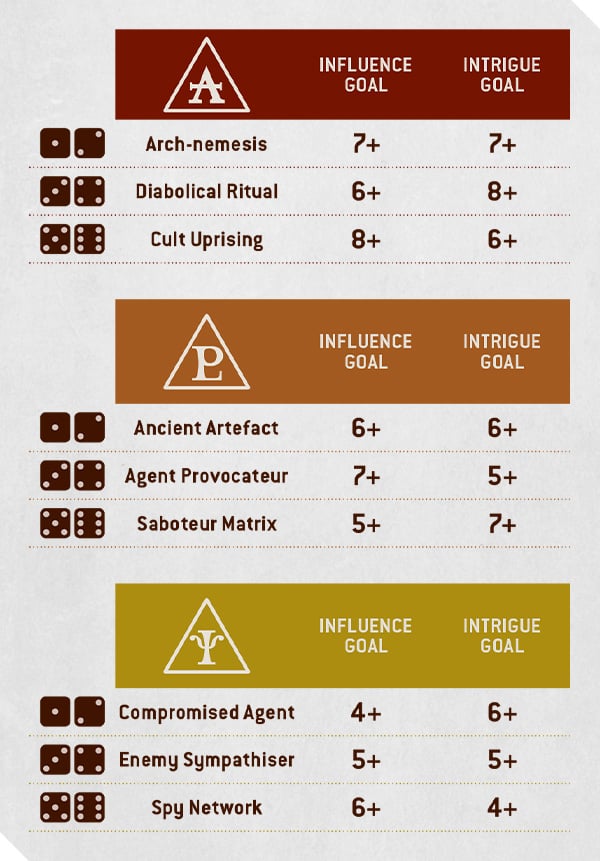
Once you know what kind of threat you’re faced with, you’ll also know how likely Influence and Intrigue are to thwart it. To fulfil these goals and thwart the uncovered threats, you’ll need to gather Intrigue and Influence points, which you’ll do primarily via Agendas, but also from Battle Traits and Requisitions (Beanith: Cowardly Requisitions).
After you attempt to uncover a threat, you can attempt to Thwart one Uncovered Threat by rolling for both Influence and Intrigue, rolling a d6 for each and adding the respective points total. You only need to succeed with one of the two rolls to thwart the Threat. Succeed, and you’ll increase the Sub-sector Control equal to the Threat’s Threat Score.
Then add one tally to the Time Remaining tally of all remaining threats. If you fill a threat’s tally before managing to thwart it, the perfidious scheme it represents comes to fruition, and you’ll have to decrease the Sub-sector Control equal to its Threat Score.
Once all of that is sorted, it’s time to roll for a Plot Twist to see if anyone has thrown a spanner in the works, or if you’ve made a lucky breakthrough. The table is mostly composed of spanners waiting to be thrown, however: while one of the results can remove a mark from a threat’s Time Remaining tally, giving you some extra breathing room to deal with it, the other options are mostly bad news: whether you’re adding a mark to a threat’s Time Remaining tally or pushing the target number for Influence or Intrigue on all uncovered Threats one higher, it’s not going to be helpful. And if you roll a 1, you’ll increase the Threat Score of a random threat by 1, which is helpful if you can manage to thwart it, but makes failure even more punishing. (Condit: There’s one option here that has to be a typo: if you roll a 6 on the table, it directs you to choose an active uncovered threat and add 1 mark to its Investigation tally, but Investigation points don’t help you if a threat’s already uncovered. I’d recommend you play this to let you choose an active threat that hasn’t been uncovered instead, as then the result will actually do something)
Once all Threats have been Thwarted or Fulfilled, your current Shadow Operation is complete. Depending on your sub-sector control level, you’ll have to hand out Battle Scars or Devastating Blows for doing a shit job. For those that managed to do the bare minimum, gain Requisition for not being completely useless. Putting in the hard yards will net you lots of Requisition and a kick-ass Vermilion-level Asset or two.
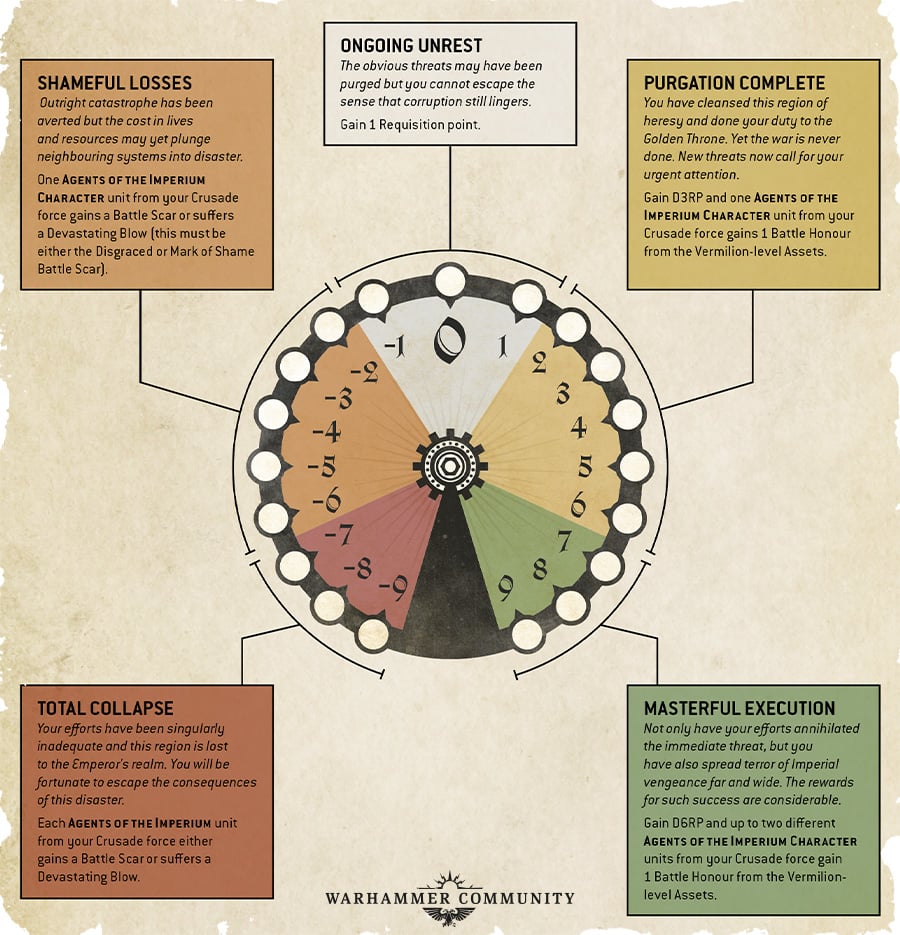
Beanith: Every single part of this all happens during the Update Order of Battle Step so it is possible to Uncover a threat, assign Intrigue and Influence points to it and then successfully Thwart it all in the same Update step.
In my first test game I had generated a Minoris, a Majoris and an Extremis threat.
During the game I was able to gain an Influence point and an Intrigue point using two of the Agendas. I was able to play with a 3rd Agenda which was a Pariah Nexus one taken for a source of XP thanks to the Inquisitorial Mandate requisition.
After the game I assigned my Investigation point to the Minoris threat. I then chose to try and uncover the Minoris threat and barely succeeded with a 3 and the assigned Investigation point to get the 4+ needed to pass the Covert level.
I then generated the Uncovered Threat which was the Compromised Agent. Now having an uncovered Threat I was able to assign the Influence and Intrigue points I gained in the battle to this threat.
Next up was time to try and Thwart the threat, I blew the Influence test with a natural 1 (thanks Greg) but lucked out with a 6 on the Intrigue allowing me to mark this test as thwarted and increase the Sub-sector Control by 1. After increasing the Time Remaining tally on the remaining two threats I then rolled for the plot twist and shot myself in the foot escalating the Extremis threat giving me less time to beat it.
Vermilion-Level Assets
These are unique Battle Honours that are available for your Agents of the Imperium Characters once you’ve resolved the Shadow Operations by either phoning it in with a Purgation Complete or absolutely smashing it with a Masterful Execution. They are unique in the sense that you can only ever have one of each in your Crusade force. Thankfully, none of them are too overpowered, but any of them will be an excellent upgrade of choice for your flock of weirdos.
Highly Placed Ally lets you start a battle with 1CP if they are the Warlord, and for a bonus point, if you win and they’re still alive and kicking rocks around on the battlefield, you can roll a D6 and gain a Requisition point on a 4+.
Secret Forces is one for the sickos: if you’re playing the long game with your Crusade army and enjoy all the different types of paperwork involved running a Shadow Operation to level said Inquisitive chump and friends before switching back to whatever Oathsworn/Living Saint/Lex Ultima/etc setting just so you can increase the number of other Imperial Weirdos allowed to accompany them, look no further. Including the bearer of this Battle Honour in your Crusade army lets you bring one more of each category of Agents (Requisitioned, Retinue, and Character) in another army. Thankfully, if you’re getting excited right now about that prospect, Administratum is here to assist you in this endeavour. There’s also a bonus Influence point up for grabs for when you want to start another Shadow Operation.
Beanith: Do you want the Loyal 32? Cause that’s how you get the Loyal 32. To be fair, I do love the idea of having my Inquisitor skulking around the battlefield with their squad of misfits whilst the main force gets on with things to spin a good narrative yarn… but I might draw the line at bringing two extra squads of Deathwatch Marines, their Watch Master buddy, 2 squads of Grey Knight terminators and an Assassin in a pear tree to fully fill out my expanded Assigned Agents quota… Unless I’m feeling bored or particularly spiteful or my Imperial Knights want some chaff to hold objectives while they’re on a quest to stomp an annoying Sword of Davion Space Marine Captain.
Trained by a Legend is your character’s “Inquisition 101” guide to slapping the Lone Operative, Infiltrators, and Stealth abilities all onto any unit they join. This lucky chap now gets to stay safe and sound at home with a squad of friends, minding the objective and flipping off Indirect fire while everyone else moves forward to stick the boot in. That, or their nickname is now Speed Bump and they’re running around in No Mans’ Land making a very brief nuisance of themselves. You’ll also gain a bonus Intrigue point each time you start a new Shadow Operation.
Master of Spies is the runt of the litter unless you’re particularly focused on running lots of Shadow Operations. You start with an extra Investigation point and every time you have to roll on the Plot Twist table, you may reroll the result. (Condit: This can be a particularly interesting choice for an Inquisitor attached to another Imperial force, as both bonuses here will help you push forward in Shadow Operations without having to devote quite as many agenda picks to that goal, freeing you up to pick agendas from your other codex.)
Bound Entity and Upholder of the Creed are fun little upgrades for your Inquisitor but only if they have either the Radical or Puritan keywords. Those keywords can only be gained by rolling the appropriate Battle Trait on the Character table but, to be fair, they are awesome results and you’ll want to get one of them on your Inquisitor anyway. Bound Entity gives your bearer’s unit Deep Strike, and Upholders of the Creed improves the model’s Leadership and Wounds characteristics by 1 each. Bound Entity is probably the better of the two, since it lets you give a unit some extra utility. (Condit: Which is fine, because Radicals are cooler.)
Void Trader is a bit of a sleeper hit: having the bearer on the battlefield at the end of a game will increase your Crusade force’s Supply Limit by 50 points. Not bad, I’ll admit, but it wouldn’t be Inquisitor-level shenanigans if that was all it did. After every battle, you may also select a model from your Crusade force that either has a Crusade Relic or a Weapon Modification, then remove that Battle Honour and either replace it with another Crusade Relic or gain a Requisition point. The flexibility on offer here is very cool, and it might add some additional value to some of the less-popular Crusade Relics, since being able to swap them out when you don’t want them anymore might make trying them out more palatable.
Agendas
Four of the five agendas will be your main source for gaining the Influence and Intrigue needed to thwart all three of your threats within the required time limits. The remaining agenda will reward you with an extra Investigation point, which will help uncover all of those threats so you can get to the thwarting that much faster. And of course, there’s also XP and other rewards in the bargain. Just note that if you want to use any of these agendas, you’ll need to include at least one AGENTS OF THE IMPERIUM character in your army.
Execution Order will likely be the agenda you’ll be looking at early on in your Shadow Operation, as it rewards you with an extra Investigation point and it’s relatively straightforward to achieve just by killing the enemy Warlord. Best of all, it doesn’t matter who actually gets the job done, because you can also give 3XP to any of your Agent of the Imperium Characters who took to the battlefield in that game.
Aggressive Negotiation is the usual ‘hold an objective in No Mans’ Land chosen by your opponent’ that crops up in most books. At the end of each of your turns, one of your units holding the objective gains 1XP. Holding it at the end of the battle will also net you D3 Influence points and a tasty prize for one of your Agent of the Imperium Characters in your Crusade army: your choice of either a Weapon Enhancement or a Crusade Relic.
The lore for Strategic Excruciation is a brief blurb about the art of battlefield interrogations and how it’s performed swiftly to pry loose the enemy’s secrets. In actual game terms, it’s just 1XP rewarded to your unit for each enemy unit killed in melee by an Agents unit. If the enemy unit in question was a Character or the Warlord, you also gain 1 Intrigue point (D3 for the Warlord) as they launch into an overwrought soliloquy about death or whatever once you’ve finished sticking the boot in.
Clandestine Infiltration is all about working in secrecy and behind the scenes to embed operatives behind enemy lines to reveal them when the moment is right. And by that we mean Deep Striking as many Grey Knight Terminators that you can whilst also dropping off the Deathwatch in their Corvus Blackstar into your opponent’s deployment zone as soon as possible. At the end of each of your turns, you’ll choose an AGENTS unit from your army that’s wholly within your opponent’s DZ to gain 1XP. And should any of your units happen to still be within 6” of the opponent’s battlefield edge at the end of the game? Gain D3 Intrigue points in lieu of a medal.
Lastly, we have Long Vigil, an agenda just for the Deathwatch fans who don’t have time for Inquisitorial nonsense with their convoluted plots and plans within plans, or are just tired of trying to stop the Rogue Trader from romancing the Kabalite hanging out on their bridge for some reason. Nope, the Deathwatch just want to show up and annihilate the enemy, earning 2XP for each Deathwatch unit still on the board at the end of the game if they pulled it off, with a bonus of D3 Influence points they can use to try to thwart some other plan. There is a consolation prize of 1XP if you did miss a couple of enemy units though, just so long as none of them are in your deployment zone. It’ll also come with 1 Influence point, which may cheer up Heinrix should he ever stop moaning about the cogitator for the umpteenth time.
Beanith: Not a bad array of Agendas, a little bit too focused on melee for the army-wide XP generation for my taste, but that’s more about myself and my preferred play style. At first glance it may seem you may find yourself falling behind on XP for some of your units as you will want to focus on choosing your two Agendas from this book instead of ones found in Tyrannic War or Pariah Nexus to gain the much needed Influence and Intrigue points, but thanks to the Inquisitorial Mandate Requisition which lets you take an additional Agenda, there’s still hope for growth for your ranged and utility mooks holding the fort at home.
Requisitions
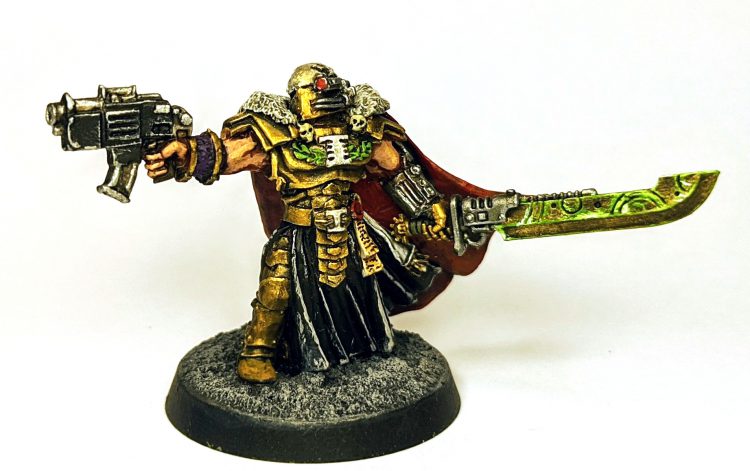
The Inquisitorial Mandate requisition, or to call it by its full title, the Mandatory 55-point Inquisitor Tax Rebate requisition is a solid gold, A1 winner in our book, and one Campaign managers may want to keep an eye on. You will be using it in nearly every single game when you are mustering your Crusade Force using any units from Agent of the Imperium faction. So long as you have an Inquisitor in your Crusade Force, you simply spend 1 RP and you can now select an additional agenda from this book. The truly bonkers part is so long as you gain ANY XP from the agenda you chose, you gain 1 RP, effectively making this a free requisition.
Beanith: Again, I can not stress enough that the Inquisitor does not have to be in your Crusade army (on the field) for you to use this requisition. They can still be in bed back at base. So jealous. This also means you can also use this when you’re running any other faction that your roster can pull off. Assuming you want to have an Agents of the Imperium character and mooks skulking around using Assigned Agents with [INSERT IMPERIUM FACTION HERE] (Knights, for example, chosen completely at random), there can be a case made for taking Aggressive Negotiations. So long as you’re holding the objective at the end of the battle, the Agents of the Imperium character gets the Weapon Enhancement or Relic. Same again for Execution Order, but this is more like a bonus Marked for Greatness assuming you murk the enemy Warlord.
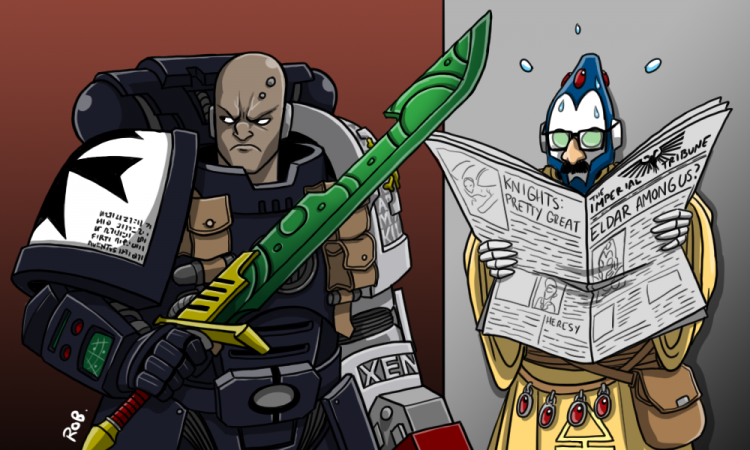
Forge Kill Team costs 1RP, and as long as you had a Watch Master in your Crusade force, you may select a second unit to be Marked for Greatness if it has the Deathwatch keyword and isn’t a CHARACTER.
Beanith: It’s another one where the Watch Captain can watch safely from the sidelines. For those slightly confused I will clarify. A Crusade Force is your Order of Battle from which you muster a Crusade Army (mustering is also the point you pick the Army Faction and Detachment). So in this case, you can use Assigned Agents to field a Deathwatch Kill Team to join [INSERT IMPERIUM FACTION HERE] (Knights once again chosen completely at random) (Condit: I am beginning to have my doubts in your random faction generator). They gain XP for taking part, possibly more if they complete any agendas, and then at the end of the game if you have won the battle, you can spend 1RP on this requisition to give them another 3XP.
Crafted for Battle is a little pricey at 2RP, but if you have it spare it might be a good idea? When adding a Retinue unit to your Order of Battle, if you have a Battle-hardened Agents of the Imperium character, spend your RP and that Retinue unit joins with 6XP, making them Blooded and letting them start out with a Battle Honour.
It wouldn’t be right if there wasn’t a Coward’s Requisition, and for Agents of the Imperium it’s Privateering. So long as you have a Rogue Trader Entourage in your Crusade force, once per Shadow Operation you may spend 1RP to gain D3 Influence or Intrigue points to help you with your thwarting needs. Or, if you’d rather let the subsector burn to fuel your own ambitions, you can lose any combination of 3 Intrigue or Influence points and gain D3+1 Req.

Of course, why should you have to have a Warrant of Trade to use a Coward’s Requisition? Surely, anything a Rogue Trader can do, an Inquisitor can do better. Investigation Chamber lets you choose the Plot Twist result for 1RP once per Shadow Operation.
Battle Traits
We’ve got five separate tables here. Deathwatch, Inquisitorial Agents, Adeptus Arbites, & Voidfarers each have three possible Traits to roll for, while all the Characters have a massive six possible results. Not only that, but some of your characters have the right keywords to allow them access to more than one table. And plenty of these traits offer up extra chances to gain Investigation, Influence, and Intrigue points while still boosting your unit’s battlefield presence.
Beanith: Sadly for the requisitioned units (like Sisters of Battle and Grey Knights Terminators), they’ve not only missed out on traits here, they are also missing the Faction Keyword that would let them use the Battle Traits from their “home” Codex and thus have to use the ones found in the Tyrannic War, Pariah Nexus and main rule book. Not a great loss in the scheme of things though.
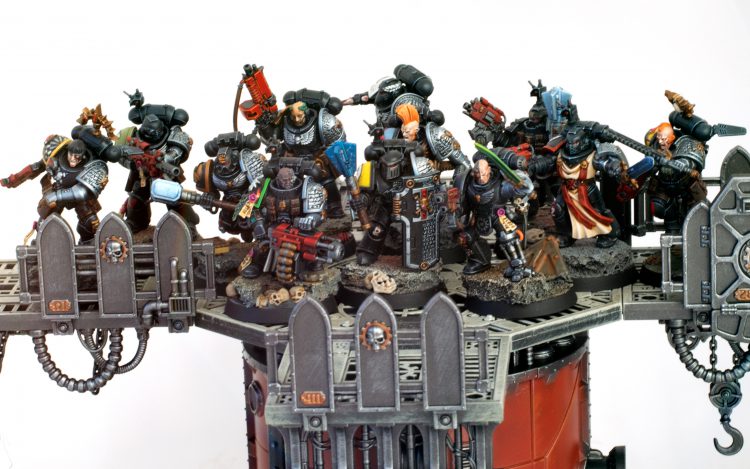
Starting out with the Deathwatch we have some absolute winners. Unwavering Enmity grants them Lethal Hits against anything that isn’t IMPERIUM or CHAOS. Tenacious Hunters gives the unit the Infiltrator ability and rewards you 1 Influence point at the end of the battle if they are within 6″ of the enemy’s battlefield edge. Last (Beanith: and more importantly, my favourite) is Brotherhood of Veterans, which lets you remove one or more Battle Honours (except for this one) from the unit at the end of a game, then immediately replace each one you removed with a new Battle Honour the unit is eligible for.
Beanith: I know that you are all fine upstanding folk who roll for their Battle Honours and right now you are imagining your Watch Master and Kill Teams getting dressed in the dark and just ending up with a hilarious combination of Traits, Weapon Enhancements, and Relics. You are good people. No doubt you will also join me as I judge and shun those that pick their Battle Honours and try to ignore their explanation of the Deathwatch having access to a massive armoury and a plethora of cross training from thousands of different Space Marine chapters…

Bonus Beanith: The Deathwatch table is for Deathwatch units. The Corvus Blackstar is a Deathwatch unit. The Deathwatch table is missing a key exception to Vehicles. This is hilarious and concerning at the same time. I’ve always wanted a plane that could infiltrate, but giving it Lethal Hits is maybe pushing things a bit too far.

The Inquisitorial Agents get a nice array of battle traits because even meat-shields deserve nice things sometimes, we suppose? Ruthless Interrogators gives lets the unit re-roll 1s to hit. While almost pointless to the bulk of the unit that isn’t carrying the giant chainsword, the actual point of this ability is if this unit somehow survives the game, any enemy Character killed by any melee attack will net you 1 Investigation point. Artful Operatives allows you to choose between the Infiltrators, Scout 6”, or Deep Strike abilities during the Declare Battle Formations, giving you plenty of options on where to place this Speedbump unit. Finally, Devotion to the Throne is another odd one as it gives the unit a bonus 2XP every time is Marked for Greatness. Why would you bother? Well, because for every Bullet Sponge unit that has this skill and doesn’t die to a stiff breeze during the game, you’ll roll a D6 and for every 6, gain your choice of 1 Intrigue or Influence point.
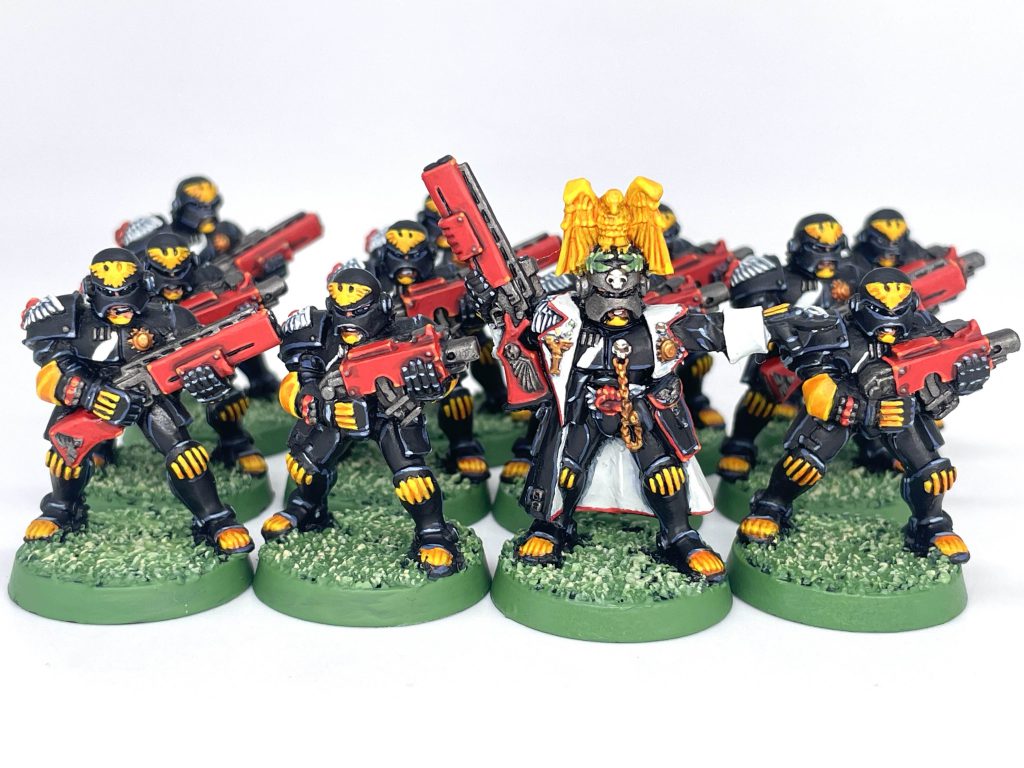
Well, we all hope no one was ready for a debate about which Judge Dredd was the better movie and why Rob is completely wrong on all counts because it turns out Beanith actually couldn’t care less. He’d much rather see more pictures of the adorable Robo-Doggos so here’s hoping the Adeptus Arbites traits are awesome so he has an excuse to purchase more.
And good news, Judicious Efficiency is a handy skill that lets the unit still be eligible to shoot or charge in a turn that they fell back. Response Officers gives the unit Scout 6”, while Repress and Detain gives an enemy unit within Engagement Range a -1 to hit to all of their melee attacks regardless of their target so long as you remember to shout “I am the Law”. (Condit: You shouldn’t actually shout that during your game, as yelling during your game is generally poor form. But that shouldn’t stop you from reminding your opponent that you are the Law at a reasonable volume every time one of your Arbites manages to do something useful, though.)

Rounding off the last of the Battle Traits for your Inquisitive mooks, we have the Voidfarers table, and I’m already keen to go out and buy some: Deck Gunners give all of the ranged weapons in the unit [SUSTAINED HITS 1], while Repulse Boarders! lets you use either the Fire Overwatch or Heroic Intervention stratagems for 0CP once per turn. Speaking of letting your shotgun-wielding minions run wild, Bridgehead Specialists adds 1 to the unit’s OC characteristic and gives you 4+ chance to earn 1RP per battle whenever they’re in range of an objective at the end of a game.
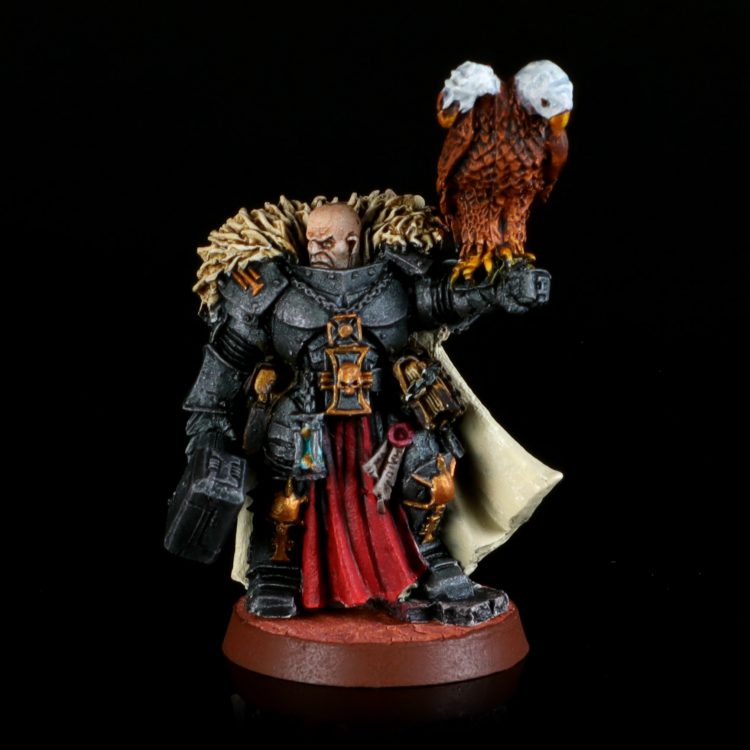
Credit: Pendulin
Last, but certainly not least, we get to the Character table and there are some fantastic options up for grabs, but not without some caveats. Esoteric Lore only works on the Warlord, and lets you take one Crusade Blessing even if you’re not the Underdog (Beanith: a possible 4th Agenda, just saying). Quarry Seeker lets the character’s unit reroll hits against a chosen enemy unit. Duellist improves the Attack, Damage and Weapon Skill characteristics of the model’s melee weapons and it also gains [PRECISION]. (Beanith: This also stacks with Weapon Modifications as well so you could end up with a very scary Vigil Spear on your Watch Master.) Clandestine Investigator gives the bearer’s unit the Stealth ability and, should they end up within your opponent’s deployment zone at the end of the game, you’ll gain 1 Investigation point on a 4+.
Now, we did promise you caveats, and the last two traits come with several. Intolerant Zeal gives the model a 4+ Feel No Pain, which is a very strong ability. But should the model also be an Inquisitor, it gains the Puritan keyword which only matters in regards to the Upholder of the Creed Vermilion-Level Asset (Condit: And also makes your Inquisitor a dork-ass loser). In addition to all of that, you gain 1 additional Influence point at the end of any battle where this model was your Warlord. Extreme Methods, on the other hand, gives the model’s weapons the [DEVASTATING] ability. If you give it to an Inquisitor, they gain the Radical keyword to unlock the Bound Entity Vermilion-Level Asset (Condit: And become cool as hell in the bargain). And if that weren’t enough, if you make them your Warlord, they’ll dig up an extra Intrigue point after every game.
Crusade Relics
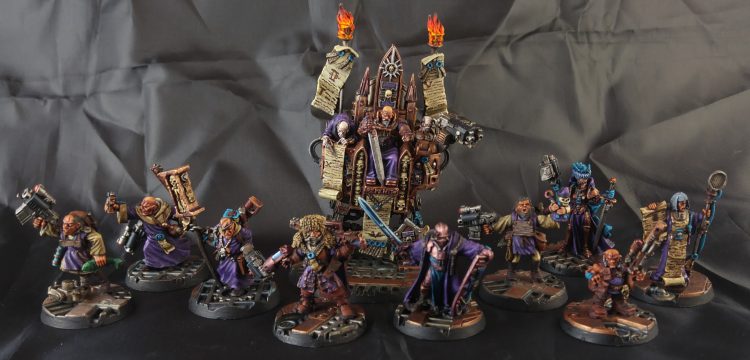
The Agents of the Imperium have thrown open the vaults to a collection of weird and wonderful relics, and this time around there’s certainly a heavier emphasis on the “weird” side of things.
In the Artificer category, we start with the Blade of the Ordo which lets you apply your choice from one of four different abilities (Lance, Lethal Hits, Precision, or Sustained Hits 1) to your model’s melee weapons every time they fight. Digital Arsenal lets you roll 3D6 when shooting at an enemy unit, dealing a mortal wound for every 4+, allocated as if they had the PRECISION ability. Truesilver Weave reduces the damage characteristic of all incoming attacks to 1, letting you stand out in the open and flip off the various heavy weapons with somewhat more success.
We only have two Antiquity Relics, they’re only for Inquisitors, and even then you need to be either Radical or Puritan to use the damn things. The slightly more unhinged Inquisitor (Radical) can get the Tainted Blade which improves the Attacks, Damage and Weapon Skill characteristics of the model’s melee weapons by 1. It also gives you the choice to unleash its full power for a fight phase by granting it both the Hazardous and Devastating Wounds keywords. The more prim and proper Inquisitor (Puritan) get the Icon of Intolerance, which is totally not a souped-up archaeotech nano-med that will return them to the battlefield at full health on a 2+ if they kicks the bucket. Plus, when that happens, they shout “Boo” really loud as they jump back up and all the enemy units within 6” must then take a Battle-shock test.
We’ve only got the one Legendary Relic, and we’re pretty sure the Inquisition has just nicked a random crate of goodies from the Adeptus Mechanicus. This Archeotech Curiosity will grant your bearer three of a possible six effects that you must roll for at the start of every battle.

- Deceit-field prevents enemy units from targeting the bearer’s unit unless they’re within 18”.
- Warp Shroud gives the bearer and its unit a 4+ invulnerable save against Psychic attacks.
- Stability Actuator lets the unit shoot or declare a charge in a turn where they Fell Back or Advanced.
- Divining Augur allows the unit to reroll one Hit roll, one Wound roll or one Saving roll per battle round.
- Biomantic Amplifier improves the bearer’s Leadership, OC, Save, Toughness and Wound characteristics by 1.
- Weapon from a Lost Age adds two results from the Weapon Modifications table to a non-Crusade Relic weapon equipped on the bearer that hasn’t already gotten a Weapon Modification
Beanith: It’s not a terrible collection; the Artificer relics are all excellent choices for all the different characters you’ll have running around and you will of course want the Antiquity relic depending on what flavour of Inquisitor you have leading your merry band of weirdos. Sadly the good times stop there for me as Archeotech Curiosity doesn’t have the decency to blow up and hand out mortal wounds like the much more awesome Vortex Grenade. I’d probably like it more if there wasn’t a 50/50 chance of not getting the Deceit-field effect every game.
Final Thoughts
Condit: Before I got my hands on these rules, I was worried about how the book would handle Crusade rules for a “faction” that most commonly appears as a bolt-on to another Imperial force. While it would have been easy to just say that you don’t use this book’s Crusade rules unless you’re running an all-Agents force, that would have drastically reduced the number of people who would get to play with these rules. But allowing any Imperial force to make use of them if they so choose is both a solid way to add some spice to a lot of players’ Crusade forces, as well as offering an incredibly thematic plot hook.
The major downside here is that, depending on what sorts of threats you generate, completing an entire Shadow Operation in the span of a single weekend might be difficult, especially if you’re using this as a “bolt-on” set of rules on top of whatever your main faction is up to. You only get to chase so many Agendas in a single game, so trying to keep a lid on unrest by thwarting plots in your Shadow Operation will often come at the cost of slower advancement of your other faction’s mechanics.
But the tension that naturally arises from using these rules alongside another army’s Crusade rules might be one of the most interesting parts. After all, how often do you read about an Inquisitor whose goals are entirely aligned with the forces they happen to be working with at any given time? More likely, they’re up to something that their notional allies aren’t cleared to know about, and the fact that pushing forward your “main” faction’s goals could spell doom for the sector at large is so archetypally “Warhammer: 40,000” it hurts.
That said, if you want to get mileage out of this book in Crusade, you’re going to need to lean into the “Imperial Weirdos” angle. As mentioned above, the various Requisitioned units don’t have the right keywords to benefit from any of the Battle Honours in this book. And while Assassins might be some of the easiest units to splash into your force, they also all have the EPIC HERO keyword and so can’t really interact with these rules. In other words, if you want to get the most out of this book’s Crusade rules, you’re going to have to play around with a bit more of it than you might in other contexts.
All in all, these are a solid set of rules that can either add some flavor to your Crusade Force if you’re splashing Agents into another list, and adds interesting choices on what Agendas to prioritize beyond just trying to rack up XP. If you’re totally focused on your Shadow Operations–whether that’s because you’re running an Agents-only force or just letting your “main” faction’s rules fall by the wayside–Shadow Operations are on par with some of the best Crusade rules in 10th, and the various upgrades will help make your Imperial Weirdos that much more effective without making them any less weird.
Beanith: I appreciate that you can use the Shadow Operations if you are running another Imperium army and just happen to have a squad of Grey Knight Terminators hanging out with their Inquisitive friend for some unknown reason in your roster… Just be aware you may just end up struggling since most of the methods to thwart threats are Agenda-based, you’re almost certainly going to end up with egg and battle scars on your face if you do try to go down this path.
This is my favourite set of Crusade rules for 10th so far and I can’t wait to dust off my Inquisitor Lord Hector Rex to see what threats to the Imperium he can thwart whilst wearing his very bulky set of Carapace armour that only happens to look like Terminator Armour and his Inquisitorial Rosette which also resembles a Storm Shield for some reason.

Have any questions or feedback? Drop us a note in the comments below or email us at contact@goonhammer.com. Want articles like this linked in your inbox every Monday morning? Sign up for our newsletter. And don’t forget that you can support us on Patreon for backer rewards like early video content, Administratum access, an ad-free experience on our website and more.


